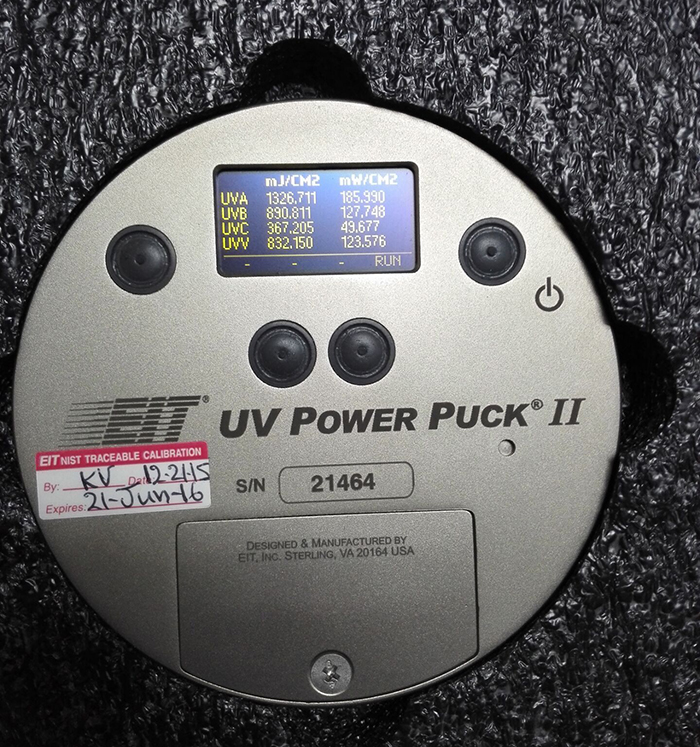2020-04-17 17:52:08
Abstract : according to the ultraviolet killing dose of Beta-coronavirus coronavirus, such as SARS and MERS in the literature, the 99.99% lethal ultraviolet dose of 2019-nCovnovel coronavirus NCP with an initial concentration of TCID50 of about 105.8 /mL was given to be 1085 mJ/cm2, and the base model of deep ultraviolet LED with reference to surface antivirus and air purification was provided for the development of various supplies.
1.Background information
It has been more than two months since the outbreak of Wuhan novel coronavirus was exposed. A large amount of medical resources have been invested in the treatment of patients, the development of treatment methods, the screening of drug of effectiveness, and the prevention and control of epidemic spread. The national health commission of the People’s Republic of China issued the “treatment plan for pneumonia infected by novel coronavirus (trail fourth edition)”[1], which mentioned that “the understanding of the physical and chemical characteristics of coronavirus mainly comes from the study of sars-cov and mers-cov. The virus is sensitive to ultraviolet and heat, 56℃ 30 minutes, ether, etc, effectively inactivate the virus. This physicochemical property of coronavirus makes it feasible to use ultraviolet disinfection technology to kill coronavirus on various surface, air and water, and a large number of ultraviolet equipment has been put into use in environments with high virus concentration, such as hospitals [2,3]. The news of the ultraviolet LED industry also mentioned that Dong Xiaoping, an expert from the institute of virus disease prevention and control of the Chinese center for disease control and prevention, found that the coronavirus exposed to UVC with intensity greater than 90 uW/cm2 could kill the SARS virus in 30 minutes [4]. At present, no more quantitative data has been available on the expression or experimental data of the lethal ultraviolet dose of novel coronavirus NCP 2019-ncov. In the practical application of ultraviolet technology, the application environment, target killing rate, ultraviolet intensity and dose are the technical indexes that must be considered. The lack of quantitative experimental data will make the application of UV lamp tube or UV LED stay in qualitative or empirical level.
Of course, limited by limited experimental resources, it is difficult to study the UV killing dose and kinetics of novel coronavirus NCP 2019-ncov. Therefore, during the SARS epidemic, the research on Mouse Hepatitis Virus (MHV) provided a very goods scientific basis for discovery, identification and understanding of the physicochemical characteristics of SARS. It is known [5] that the coronavirus contains four virus genera, namely Alpha-coronavirus, Beta-coronavirus, Delta-coronavirus and Gamma-coronavirus. The highly pathogenic coronavirus SARA-CoV and MERS-CoV, as well as the model virus MHV used to study the molecular virology of coronavirus, are Beta-coronavirus. The genome of this virus is a single positive strand RNA, the length of about 30,000 nucleic acids, belongs to the genome of the largest RNA viruses. MHV, SARS-CoV, MERS-Cov and NCP 2019-nCoV have high homology and structural homogeneity, so their resistance to ultraviolet radiation has similarity and mutual reference.
Based on the above facts, this paper summarized the research data of ultraviolet killing of various coronaviruses, such as SARS-CoV, MHV-CoV, in part of the literature, and summarized the ultraviolet dose and influence conditions of UVC needed for virus killing on the surface and in the air, so as to guide the development of UVC LED supplies. The specific process of virus culture and experiment is not the focus of this paper, please refer to the reference, here is not repeated. At the same time, considering that when the references were published, deep UV UVC-LED was not a popular technology, so the light source used was all ultraviolet mercury lamps, which does not mean that it has no reference significance for the project design of deep ultraviolet UVC LED. Furthermore, the killing efficiency of 275nm deep ultraviolet LED is the same as that of 254nm ultraviolet lamp tube.
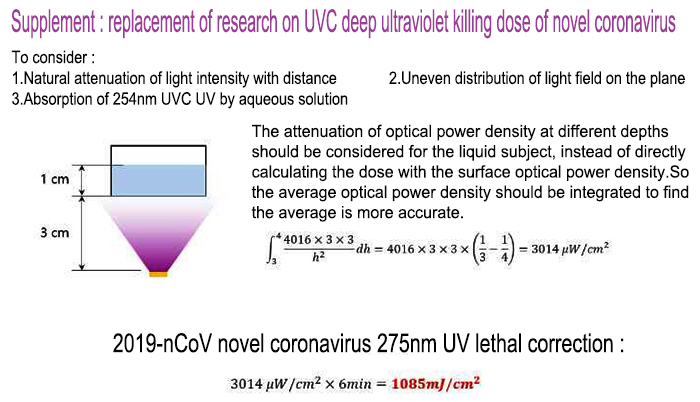
2.The amount of ultraviolet radiation required to kill coronavirus on a surface
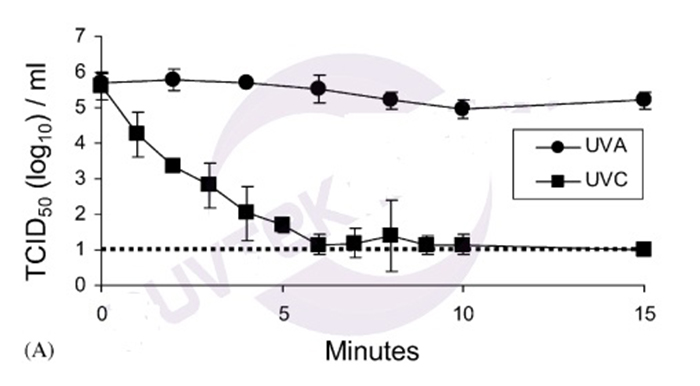
Fig. 1 , relationship between survival and exposure time of SARS-CoV coronavirus under UVC and UVA irradiation [6]
The Taylor Team of the center for biological assessment and research of the USA Food and Drug Administration in 2004 [6] and 2006 [7] showed that under the irradiation of a deep ultraviolet light source with the characteristic wavelength of 254 nm and the radiation intensity of 4016 × W/cm, the sample of SARS - Cov virus with the initial concentration of TCID50 of about 105.8 / mL was partially killed after 1 min, and the number of survival after 6 min was ~ 10 / mL, with the killing rate above 99.99%. after 10 minutes ≤ 1.0 TCID 50 (log 10)/ml, the killing rate can be considered as >99.99%. It can also be seen from the table that the kill rate LOG value is positively correlated with the cumulative exposure dose (here is the exposure time), and a linear relationship is formed before the LOG value is lower than 4. So, at 105.8/ml virus concentration, the required UV dose for the 99.99% kill rate was 1445 mJ/cm2. According to the linear relationship between the killing rate LOG value and dose, it is not difficult to get that the required dose of 99.9% killing rate is 722mJ/cm2. While UVA can destroy the RNA chain of the virus by combining with photocatalyst to produce reactive oxygen species, UVA ultraviolet (365 nm, 2133 KB /cm2) has no killing effect on SARS-CoV coronavirus. Xiao-ping Dong Team [8] reported strength > 90 mu in 2003 W/cm2 squared UVC irradiation coronavirus, 60 minutes to kill SARS virus (note that the original is 60 min 30 min) rather than the previously said in the news, the cumulative dose conversion 324 mJ/cm2, lower than Taylor team 1445 mJ/cm2, probably because the experiment condition, or a virus sample source, and xiao-ping dong team did not give specific values of the LOG data, so there is five times the difference (reflected in the LOG on the killing rate value is only 0.5). From the perspective of performance redundancy, it is suggested that the application manufacturers need 1085mJ/cm2 dose according to the killing rate of 99.99% in the scheme design.
At the beginning of this month, the outbreak spread. According to the literature review at home and abroad, the lethal dose of novel coronavirus was estimated to be 1445 mJ/cm2 with the initial concentration of about 105.8/mL novel coronavirus and the killing rate of 99.99%. The dose is inaccurate and needs correction. This is the dose calculated by multiplying the optical power density times time. This inference misses a detail, which is that the SARS test scenario was a 1cm high water solution, and it is not accurate to calculate the radiation dose of the entire solution with a surface strength of 4016 km /cm2. The irradiation intensity is inversely proportional to the square of the distance. So the radiation intensity at the bottom of the solution is not the same as the top. If you calculate the cumulative dose, you should take a linear average. LED is a small size of light, approximately spot light source, irradiated surface distribution is not uniform, considering that the range of 1cm fluctuations are small, little impact, here can be approximately average. In addition, the absorption of UVC by aqueous solution, previous studies mentioned that the absorption of pure water 275nm is relatively small, and the dispersion density of virus is also limited, so the absorption of water can be ignored here. After the depth score, we hereby solemnly revise the lethal dose of novel coronavirus to 1085mJ/cm2 for your reference.
The SARS-CoV virus in the above killing experiment was dispersed in phosphate solution, which can be compared to the situation of object surface and water. Of course, coronaviruses in tissue such as blood have been shown to unable to be killed directly by ultraviolet radiation [7].
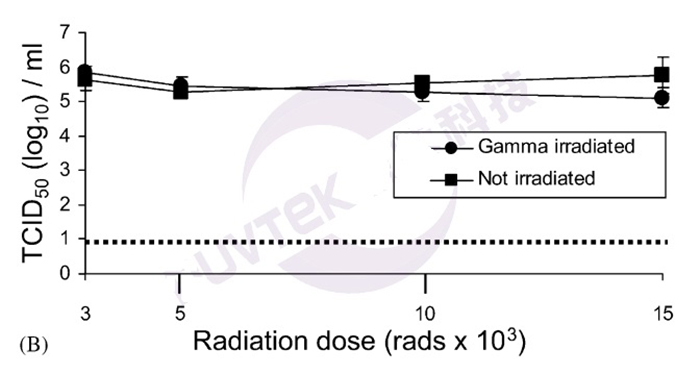
Fig.2 killing ability of SARS-CoV by gamma rays at different doses [6]
Remarkably, the gamma rays (up to 15, 000 rad) that destroy normal human cells and cancer cells have little effect on the SARS virus.
3.UV dose required for airborne coronavirus destruction
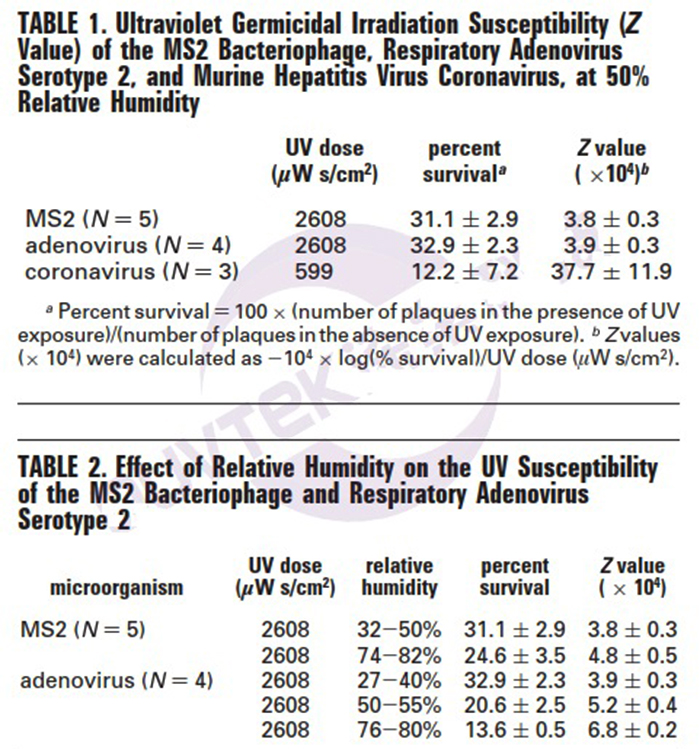
Fig. 3 survival rate of coronavirus aerosols under ultraviolet radiation and its relationship with humidity [9]
In the 50*260*455 mm (L*W*H) single circulation duct with a flow rate of 12.5 L/min, air with an aerosol virus concentration of 104~105 PFU/mL and a humidity of 50% Rh was fed. Using a 36W ultraviolet mercury lamp (ozone isolation) to illuminate the tube from the inside 455mm, the ultraviolet radiation intensity at the close window was adjusted to 599 W/cm2. After stable operation for 15 min, the killing rate of MHV coronavirus sampled from the single-cycle outlet was 87.8%, compared with the control group. The data in Fig.2 also showed that the killing rate of virus aerosol was high under high humidity.
The date showed above provides data support for air disinfection scenario. It can basically converted that in the cyclic wind mode, the killing rate of MHV coronavirus in the air of 30 cubic meters in 2 hours is 87.8%, which needs to use 320pcs of 10mW 275nm UVC LED light beads, is far more than the number of beads in the natural bacterial scene (the theoretical calculation result is 2~4 pcs [10], depending on the product structure). the 99.99% surface killing dose of escherichia coli is about 13.2mJ/cm2. In the second section of this paper, the dose required by SARS virus is 110 times that escherichia coli, which is basically consistent with the dose multiple relationship required by air purification. In order to apply it in the actual scenario, it is necessary to change the working time of UVC LED to 24h continuous opening, so that the number of UVC-LED needed to be configured for 30 cubic meters of space is 27pcs, which can meet the cost requirements of commercial application. Presumably, this dose relationship can also be referred to in static and flowing water.
4.The reference significance for NCP 2019-nCoVnovel coronavirus UVC UV killing dose
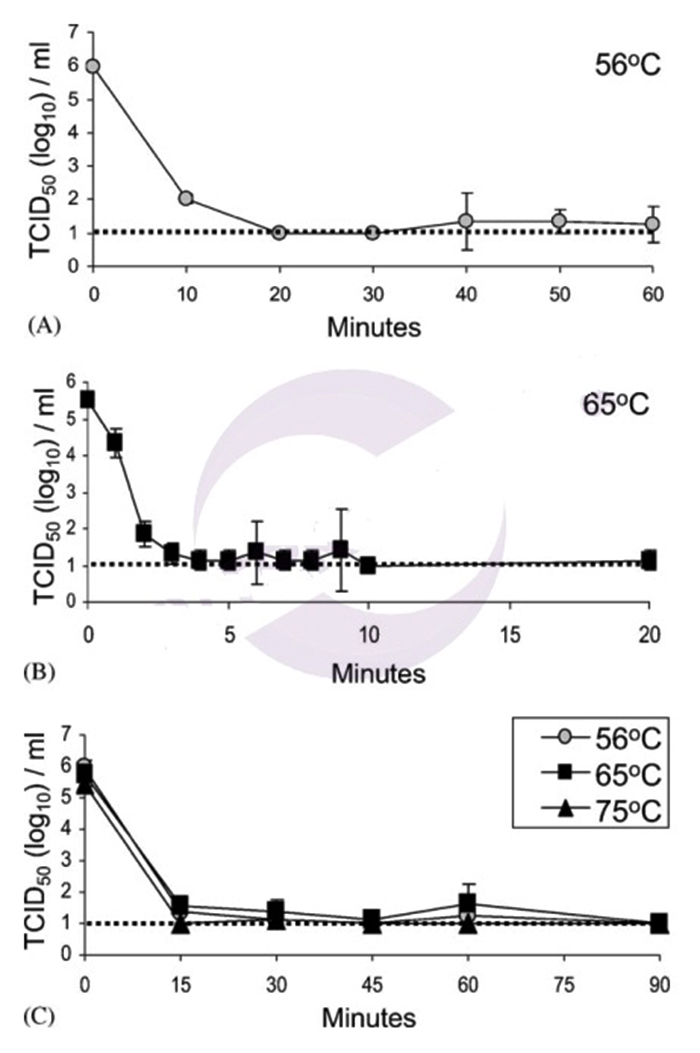
Fig. 4 The relationship between survival and heating time of SARS-CoV after heating treatment at different temperatures [6]
The experimental data showed that the SARS-CoV treatment at 56℃ for 20 min could achieve a killing rate of over 99.99%, and the time required at 65℃ could even be reduced 10 minutes. Although there is information that NCP 2019-ncov can be killed when heated at 56℃ for 30 min, there is no analogy between thermal resistance and UV resistance, so the physicochemical characteristics of SARS cannot be scientifically deduced for UV resistance of NCP 2019-ncov, which can only be used as a reference. Kurt Bedell, BS, from the university of Lowa, USA, reported that at a distance of 1.22 meters, MHV-A59 and MERS-CoV at 8.9*105 pfu/mL concentration, also belonging to the genus Beta-coronavirus, took 10 min and 5 min respectively, with twice the lethal dose difference [11]. However, as mentioned above, the difference of 2 times dose reflected in the killing rate is only LOG value of 0.3, which is the difference between 99.9% and 99.95% in the case of high LOG base, which can be ignored in production.
5.Conclusion
The virus is rampant, deep ultraviolet LED industry enterprises, it is incumbent on the effective program development and core device supply level to go further. It is hoped that the lethal dose of 1085 mJ/cm2 99.99% bactericidal rate (the initial concentration of viral TCID50 is about 105.8/mL) and the corresponding surface disinfection and air purification models can help develop various kinds of deep ultraviolet LED products.
6.References
[1] National health commission.Treatment of pneumonia by novel coronavirus (trial 4) [Z].2020.
[2] LEDinside.Under the epidemic, about the ultraviolet sterilization of these knowledge points to know !
[EB/OL].https://www.ledinside.cn/news/20200204-46872.html
[3] what can we learn from SARS against a novel coronavirus
[EB/OL].https://news.china.com/socialgd/10000169/20200121/37728369_all.html#page_2
[4] Darnell M E R, Subbarao K, Feinstone S M, et al. Inactivation of the coronavirus that induces severe acute respiratory syndrome, SARS-CoV[J]. Journal of Virological Methods, 2004,121:85-91.
[5] Darnell M E, Taylor D R. Evaluation of inactivation methods for severe acute respiratory syndrome coronavirus in noncellular blood products[J]. Transfusion, 2006,46(10):1770-1777.
[6] Duan S M, Zhao X S, Wen R F, et al. Stability of SARS coronavirus in human specimens and environment and its sensitivity to heating and UV irradiation[J]. Biomed Environ Sci, 2003,16(3):246-255.
[7] Walker C M, Ko G. Effect of Ultraviolet Germicidal Irradiation on Viral Aerosols[J]. Environment Science & Technology, 2007,41(15).
[8] Kurt Bedell B, Buchaklian A H, Stanley Perlman M. Efficacy of an Automated Multiple Emitter Whole-Room Ultraviolet-C Disinfection System Against Coronaviruses MHV and MERS-CoV[J]. infection control & hospital epidemiology, 2016,37(5):598-599.
[9]References from DUVTEK
How to measure the UV Power and Intensity?
Of course the first choice is America EIT POWER PUCK II.
Contact with me : uvcure@uvspacelight.com
